An expert view: Chris Vandewalle, beer historian
Author: Erik Verdonck / Published: 2015-01-28 22:59:23 +0100 / Last Updated: over 8 years ago
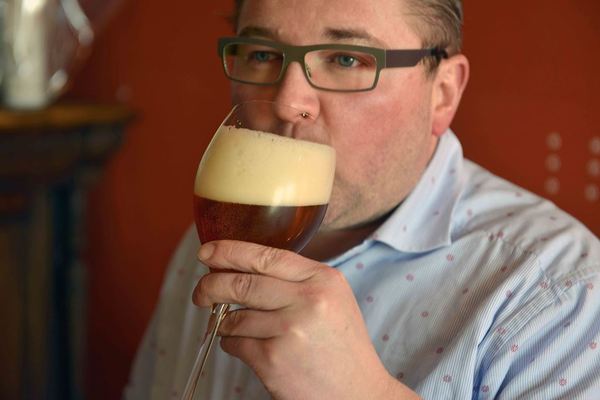 Chris Vandewalle
Chris Vandewalle© BeerTourism.com
LO-RENINGE - “Look at this!” Chris digs out an old, small leather suitcase that contains an original, hand-written brewer’s handbook dating back to 1856. “I can read it perfectly well and I know exacly what the brewer
 A proud barrel owner
A proud barrel owner
© BeerTourism.com
set out to do. I compare it with my own study materials, integrate my findings with my own experience as a brewer and listen to my gut feeling.”
Chris Vandewalle knows what he is talking about. This man is a historian, in charge of the Diksmuide city archives, as well as a brewer.
His Vandewalle seasonal brewery, founded in 2011, is a seamless addition to a family brewing tradition that goes back to the mid-18th century.
There are relationships with other well-known historic Belgian breweries that are still plying their trade too, such as Van Eecke in Watou and Boezinge’s Leroy. This archivist is captivated by local brewing history.
His seizoensbrouwerij makes a Reninge Bitter Blond and a Reninge Oud Bruin.
The first is a well-hopped, blonde seasonal beer, brewed between the months of September and May. The oudbruin, or old brown, is a beer style (traditionally) produced in winter. “I have joined the tradition of versnijbieren (cut beers, a young beer blended with a beer that is one year old),” Chris says.
 Brewer's handbook
Brewer's handbook
© BeerTourism.com
“The oudbruine continues to mature in large wooden barrels, or foeders’,” he explains. “Brewers used to be blenders first and foremost.
By cutting a young beer into an old one, they managed to extend the storage period of the beer.
Take a look at the gueuzestekers who blend various lambics up to this day.
Until the 1950s my family was producing a lambic in the valley of the IJzer (Yser) that was blended to produce a gueuze. This gave me the idea to blend an Oud Beersel lambic with a Reninge Bitter Blond.”
 Bottles galore...
Bottles galore...
© BeerTourism.com
Back to The Roots
Chris brews beers that are inspired by the Westhoek region’s original beers. His aim is to produce a taste that is as pure as possible. For example, he uses new Burgundy barrels. He procures his soft water from the
 Time to taste
Time to taste
© BeerTourism.com
IJzer reservoir, only uses hops from the nearby village of Poperinge, and allows his beers to ferment spontaneously in open basins.
“Did you know that fruit beers, such as kriek, were prevalent in the Westhoek region?” he asks me. “There used to be orchards covering up to 10 acres".
"This region was known for its apples, pears, nuts, krieken cherries... until we were shot to pieces in the First World War. This also signalled the end for up-and-coming local breweries".
"At the end of the 19th century, quite a few farmers had started to produce their own brews. After the war, a number of them invested their war compensation funds into the Brasserie Centrale Yproise in Ypres and started producing bottom-fermented beers such as the Ypra Pils".
"This brewery was closed down in the 1960s.” Once the brewer puts on his historian’s hat, the flow of words is unstoppable.
I want to know Chris’s secret: how does he give his beers such a pronounced taste? “In the first place, I select my ingredients with the utmost care,” he answers. “For example, I only work with
 Beauty unveiled
Beauty unveiled
© BeerTourism.com
hops that have been harvested locally; I only use noorderkrieken cherries picked from a local orchard in Veurne-Ambacht….”
It is obvious that this brewer sets his benchmark very high. “If you use open fermentation you have to take the climate into account,” he says. “When summer is at its peak, spontaneous fermentation will fail".
"Also, you have to stay around at all times to keep an eye on the process, to replenish the basins when required, etc.”
And, before you ask, I am not allowed a glimpse of the kriek that is maturing in the barrels. At this stage of the brewing process, the brew has not yet been exposed to oxygen.
 Chris his brewing family
Chris his brewing family
© BeerTourism.com
Taking Your Time
In the meantime, a steaming casserole of 'stoverij' (beer braised beef) is put on the table, accompanied by the ubiquitous golden-brown fries. This delicious typical dish is helped on its way with a freshly-sour oudbruin beer.
 Hand wrapped
Hand wrapped
© BeerTourism.com
We finish off our tasting with a blended beer containing Reninge Bitter Blond and a lambic in which the lactic acid bacteria that are native to this region have left their mark.
The bottles on the table have not yet been wrapped by hand in silk paper, unlike those that are marketed to the public.
We take our time to enjoy beers that have been given plenty of time to reach their peak. This process takes three months for the blonde, twelve months for the oudbruin and as long as fifteen months for the kriek…
This (late) New Year’s dinner makes you call out for more.
If you want to taste the beers made by the smallest brewery in the Westhoek, a degustation is the way to go. The neighbours, who are also after more of this delicious beer, have found a crafty way.
They leave the empty beer bottles out at their front door, hoping that the brewer will refill them. It’s worth a try when I am next in the area.
Poperinge Blog Posts
_1024x683.jpg?1424765352) Hop shoots from Poperinge, a veritable delicacy
Hop shoots from Poperinge, a veritable delicacyPROVEN/POPERINGE - Today I am visiting ‘t Hoppecruyt in the village of Proven near Poperinge. The majority of Belgian hops are produced in this region, the so-called Westhoek, known internationally as ... [ read more ]
 Poperinge and the Westhoek, endlessly tasty
Poperinge and the Westhoek, endlessly tastyPOPERINGE - The hop fields stretch far beyond the horizon. The crop remain the trade mark of the Westhoek area of West Flanders. Hop farming began in the Hops Museum ... [ read more ]
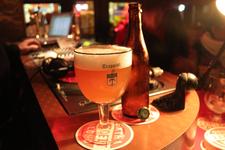 Are the brews of Westvleteren really worth the cash?
Are the brews of Westvleteren really worth the cash?OSTEND - During a heated discussion among some hardcore Belgian beer aficionados the question of Westvleteren arose. Is it really worth the price resellers charge for it? This debate was fueled by t ... [ read more ]
Comments
You must be logged in to leave a comment
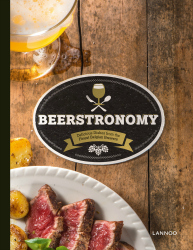
You Might Like

The Duvel Moortgat Brewery caters to everyone’s tastes with 3 different brewery experiences. From complete novice to experienced beer lover, Duvel has the brewery visit package for you.

Everything you ever wanted to know about (Belgian) beer under one roof. You get to feel, smell and taste ingredients and discover the typical Belgian beer styles. Come celebrate Belgian beer culture in heart of historic Bruges! Shop and bar are accessible without visiting the museum.

This freemium App for IOS and Android lets you explore and find the best that Belgium's UNESCO recognised beer culture has to offer. Find breweries, bars, restaurants, festivals, events, experiences and beer shops; create you own beer trips and be your own tour guide!

Brasserie Dubussion prides itself on tradition and taste and has opened a brand new visitors centre, the Beerstorium. Learn about the rich history, beers and brewing at the oldest brewery in Wallonia. You can visit this authentic Belgian brewery, see brewing in action, as well as taste some of their delicious brews for yourself, including their legendary Bush (Scaldis) beer range.
BLOG
POSTS
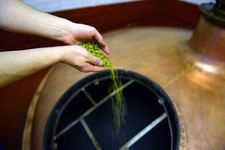 Belgian beer styles: Gueuze & Lambic
Belgian beer styles: Gueuze & Lambic
PAJOTTENLAND - Lambic (lambiek) is one of the oldest beer styles in Belgium. It is a spontaneously fermented beer, a so-called flat beer, coppery blonde to a... [ more ]
 Belgian beer styles: The revival of 'Roodbruin'
Belgian beer styles: The revival of 'Roodbruin'
VICHTE - It might be a cliché for those producing brews as rooted in history as 'roodbruin' is. But Karel and his brother Peter really are scions of a brewing dynasty. “We have been ... [ more ]
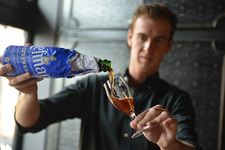 Belgian beer styles: Oudenaards bruin bier
Belgian beer styles: Oudenaards bruin bier
OUDENAARDE - The city of Oudenaarde is known for its brown beers, most famously those produced by Liefmans. The characteristic flavour of these brown beers comes from the souring that occurs dur... [ more ]
 Professor Jo Swinnen: Halfway between tradition and innovation
Professor Jo Swinnen: Halfway between tradition and innovation
LEUVEN - Our passion for a good brew in the glass can make us forget that brewing beer is an important economic activity but Professor Jo Swinnen of Leuven University takes us back to reality. In his book, ... [ more ]
 An Expert View: Denis De Keukeleire, the Hoppy Professor
An Expert View: Denis De Keukeleire, the Hoppy Professor
GHENT/MELLE - “I am quite surprised that the hop is surrounded by so much hype these days. It used to be just a commodity,” Ghent professor Denis De Keukeleire begins. No-one else is better placed ... [ more ]
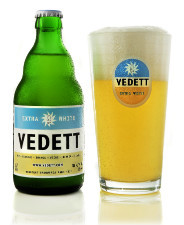
More Beer
Wheat beer is an inseparable part of Belgian beer culture. No surprise then, that, after the success of the Vedett Extra Blond, the Vedett Extra White saw the light of day, in 2008... [ more ]
Beer Tourism Newsletter Signup
Enter your name and email address on the right and click "SignUp" to join.









